100th Anniversary Great Nave Tour at the Cathedral of St. John the Divine
Celebrate the 1925 construction of the stunning nave inside the world's largest Gothic cathedral!


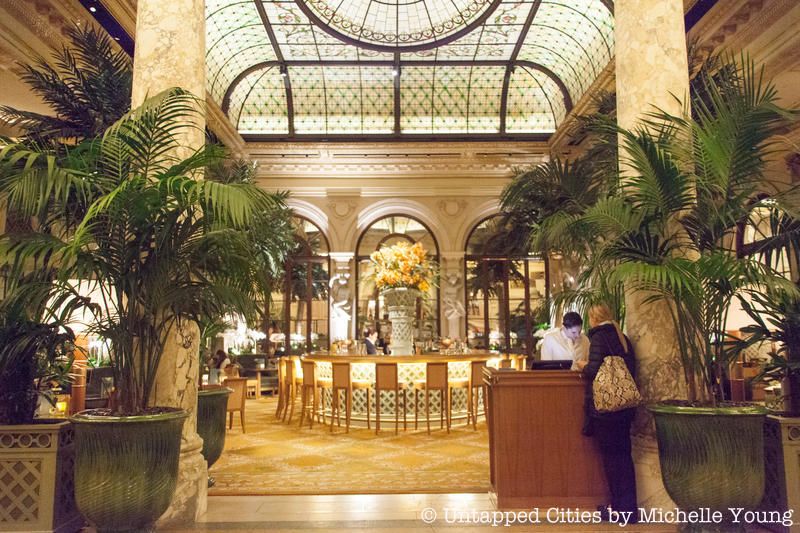
New York City is known for its diverse food scene — one that not only offers variety but also ingenuity. Unsurprisingly, there’s a vast array of mouth-watering dishes to discover, but one thing is for certain when it comes to dining out: the location, whether you choose to eat at a food court or a teeny tiny eatery, plays a huge role in your overall experience. Luckily, there are plenty of restaurants in New York City that offer great food inside equally great atmospheres. This is particularly true of the following 10 eateries housed inside landmark buildings across the city. By embracing their storied history, they are able to cultivate truly unique culinary experiences suited to New Yorkers and visitors from all walks of life. Of course, this is just a sampling of the many places worth visiting.
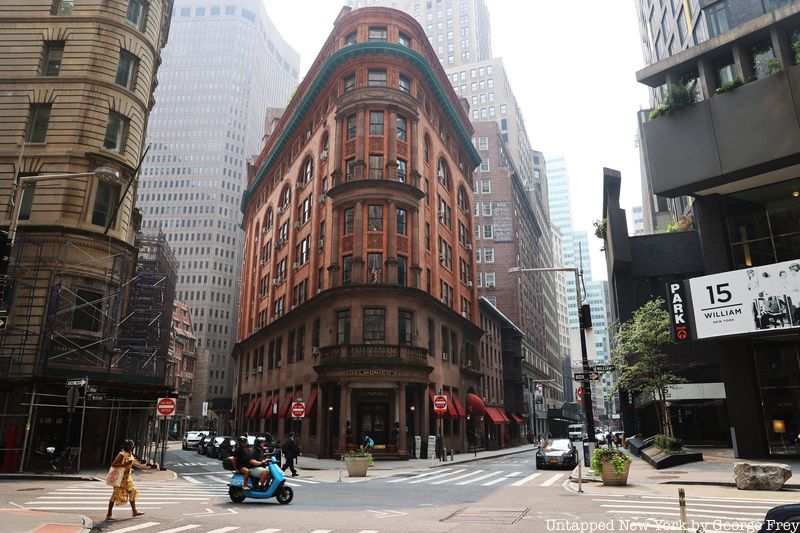
When it opened in 1837, Delmonico’s was the first fine dining restaurant in the country. Close to two centuries later, this original, famous location retains its landmark reputation, offering a selection of the world’s finest wines and the famous house special, the Delmonico Steak.
The orange, iron-spot brick brownstone, erected in 1890-91 and designed by architect James Brown Lord, was landmarked in 1996. Located on a triangular plot of land at the intersection of Beaver, William, and South William Streets, the building is noted for its facade, which features Renaissance motifs, giant arcades, and a rounded corner with two tiers of giant columns. We also have the restaurant to thank for a variety of popular dishes as Delmonico’s Chef de Cuisine, Charles Ranhofer, is allegedly credited for inventing Eggs Benedict, Baked Alaska, Lobster Newburg, and Chicken A la Keene.
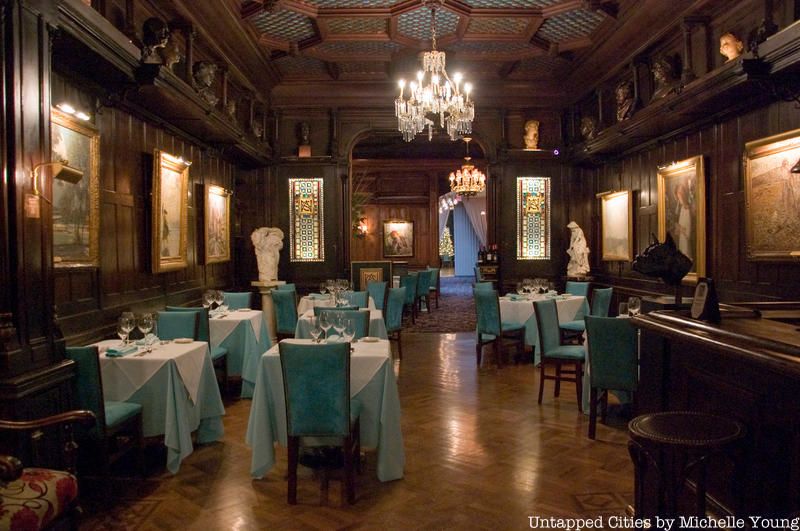
Offering educational programs and shows, the National Arts Club was founded by The New York Times art and literary critic, Charles Dekay, in 1898. Since 1906, however, the private club on Gramercy Park has been housed inside the Samuel J. Tilden House, a landmarked Victorian Gothic Revival brownstone (15 Gramercy Park), which was designated a New York City landmark in 1966 and declared a National Historic Landmark in 1976.
In addition to the various programs, the National Arts Club has a dining room and bar that offers lunch and dinner. However, it’s only open to members, guests of members, or members of sister clubs (like the Salmagundi Club), and there is a dress code to enter. You may have also seen this restaurant featured in The Marvelous Mrs. Maisel.
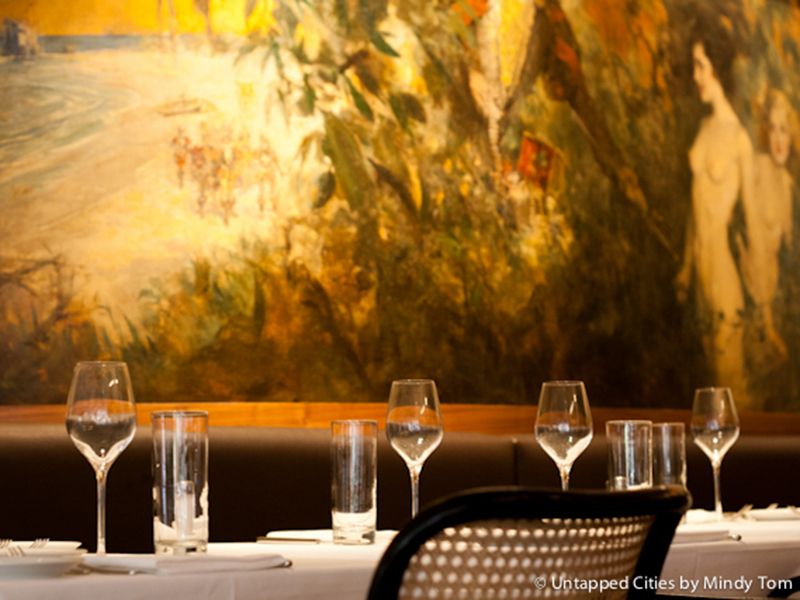
The Leopard at des Artistes is a quintessential New York restaurant; the mood is sophisticated and the ambiance is suffused with history. But The Leopard at des Artistes also holds a rich history as the centerpiece of the artists’ district at West 67th between Columbus and Central Park West. The Hotel des Artistes was designed by George Mort in the Neo-Gothic and Medieval styles to specifically attract artists. Between 1901 and 1921, several other apartments were built in the area, thus turning it into a hub of creativity on the Upper West Side. Even though the highly developed area around Lincoln Center isn’t much of an artist’s colony now, it wasn’t until the late 1990s that the real estate market discovered the neighborhood.
Today, the area is listed in the National Register of Historic Places as the “West 67th Street Artists’ Colony District.” Also, both the Hotel des Artistes and its famed restaurant space have won landmark designation. If the glowing murals of naked nymphs that line the walls of The Leopard at des Artistes could talk, they would describe the Italian dishes featured on the menu by executive chef, Vito Gnazzo, as homages to the small towns that dot the six regions of Southern Italy. Artists, dancers, musicians, and writers dined at 1 West 67th long before it became The Leopard at des Artistes. The restaurant was built to serve the tenants of the Hotel des Artistes — a residence above the restaurant whose apartments lacked kitchens. It was the go-to place for the creative and successful–the likes of Rudolf Nureyev and Itzhak Perelman dropped in between rehearsals and performances.
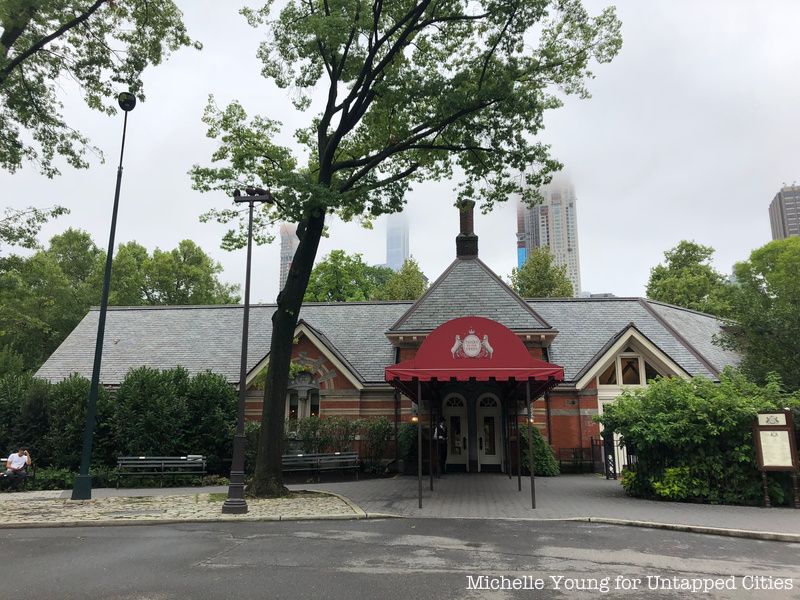
Housed inside a Victorian Gothic building built in 1871, Tavern on the Green is nestled inside Central Park where it offers creative takes on seasonal American fare and classic cocktails. Although the restaurant shuttered briefly and was temporarily used as a gift shop and public bathroom, it was reborn again in 2014 with a completely redesigned space and menu.
According to CBS Local, the renovation efforts totaled $20 million — roughly double the original estimated cost — as the only piece of the restaurant that was salvageable was the wood beams. When it was built, Tavern on the Green was known as The Sheepfold, which was regarded as one of the park’s exquisite nineteenth-century structures. At the time, the building was used to house sheep, who would graze on Sheep Meadow, as well as the shepherd and his family.
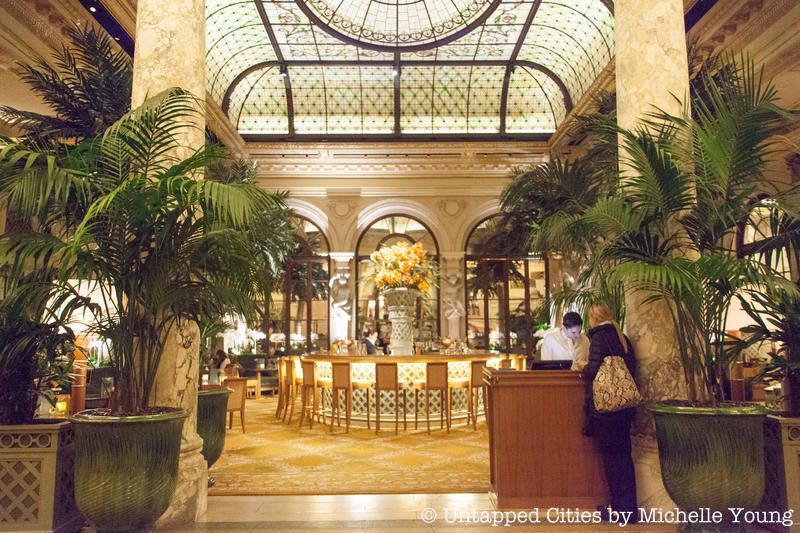
At the corner of Central Park South sits a French Chateau. At least, that’s what the original developers of New York City’s Plaza Hotel — Bernhard Beinecke, Fred Sterry, and Harry S. Black — intended when they spent $12 million building a 19-story “skyscraper” hotel near Manhattan’s Grand Army Plaza. The Plaza Hotel, the only hotel in the city to be named a National Historic Landmark, opened in 1907. For decades, it was the meeting place of Manhattan’s wealthiest socialites, and papers hailed it as the greatest hotel in the world at the time. It was certainly the most luxurious, boasting its breathtaking glass-ceilinged Palm Court, its 1,650 crystal chandeliers, and its gold-encrusted china, the largest order from L. Straus & Sons in history.
The Palm Court, New York City’s “iconic destination for Afternoon Tea,” features a grand bar, tea by Palais des Thés, and a menu of American fare. Renowned architect, Thierry Despont, renovated the space in 2013, covering it with potted plants, ceiling-high palm trees, and custom furnishings. The hotel itself was designated a New York City landmark in 1969; by 1986, it was recognized as a National Historic Landmark due to its stunning architecture.
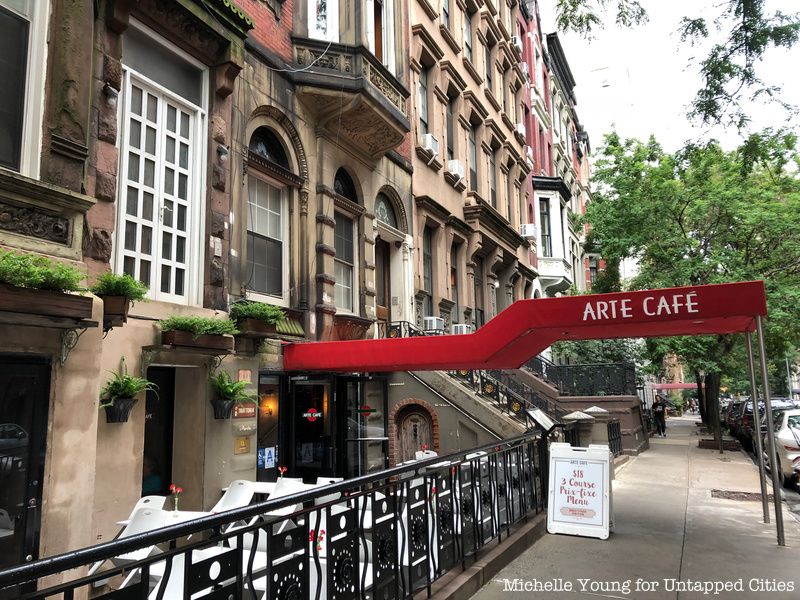
Arte Café, a “neighborhood standby” that specializes in authentic Italian food, is housed inside a landmarked brownstone on the Upper West Side. Located between Columbus and Amsterdam Avenue, right by Central Park and the Museum of Natural History, the eatery is known for its cozy atmosphere and home-style dishes, which are offered in huge portions.
The brownstone itself features a modern bar, a large outdoor patio, and a private skylight dining room. It is cultivated to make customers feel like they’ve entered a classic, vibrant, and traditional Italian home, whether they drop by for brunch or for dinner.
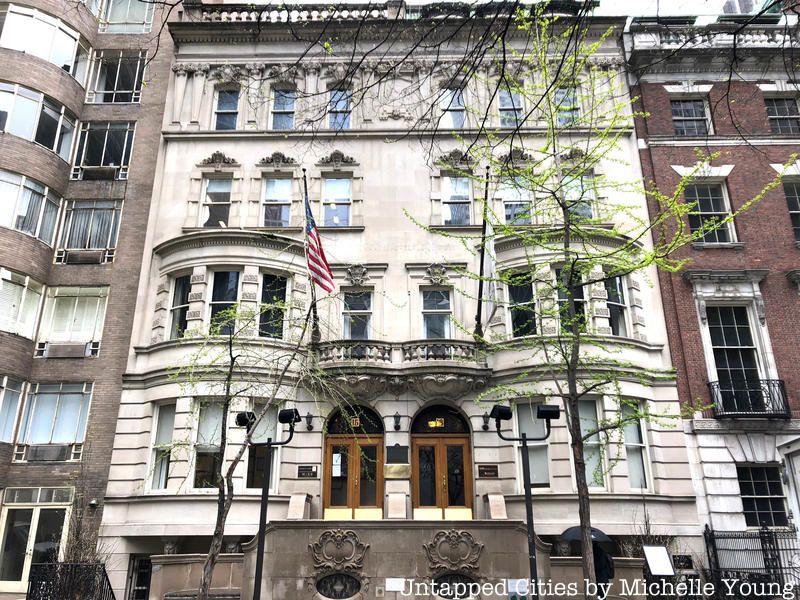
The Rockefeller Townhouses, located at 13-15 West 54th Street, were built in 1897 by architect Henry Hardenbergh, the mastermind behind the Dakota Building and Plaza Hotel. The townhouses play host to a Southern Italian comfort food restaurant called Il Gattopardo. Along with other buildings on the block, including the University Club, the Rockefeller Townhouses serve as examples of the distinguished structures that once characterized the West Fifties between Fifth and Sixth Avenues (what was called “Millionaire’s Row“).
The twin six-story mansions, designed in the Beaux Arts Renaissance style and designated a New York City landmark in 1981, are particularly noted for their distinctive limestone facades, which feature ornamental engravings. Before the space was converted into Il Gattopardo, however, it served as home to John D. Rockefeller and his wife, Laura Spelman for forty years. Today, the restaurant, which now boasts a bar and private event space, is a beloved spot to enjoy seasonal eats from Naples and the surrounding area.
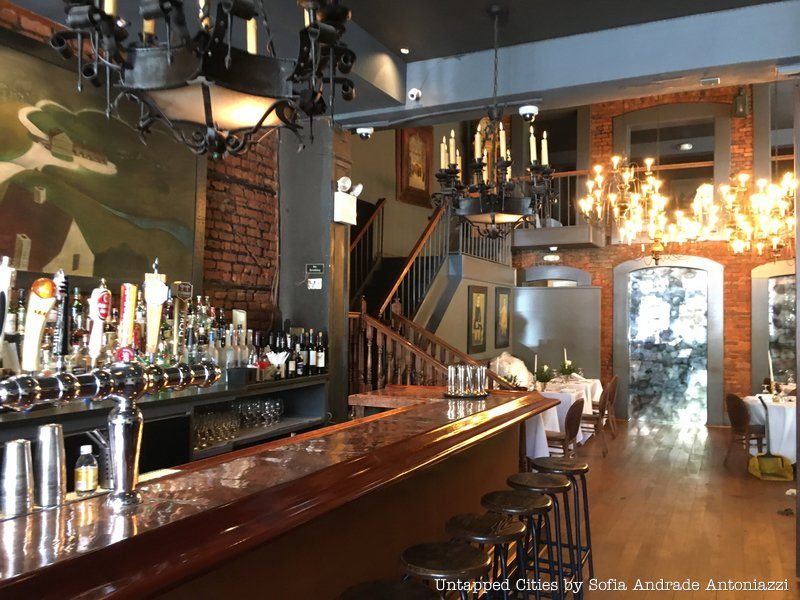
A Greenwich Village staple, One if by Land, Two if by Sea, is located in a historic, landmarked carriage house that was built in 1767, and used by Aaron Burr in the 1790s as a storage place for his coach and horses. The eatery is often referred to as the “most romantic restaurant in New York City,” thanks to its beautiful decor, which includes brick fireplaces, candlelit tables, a baby grand piano, and a private garden. In fact, according to the restaurant, more engagement announcements have taken place at this restaurant than in any other in Manhattan.
Today, the building is steeped both in history and urban legend. Before serving as a restaurant, it operated as a firehouse, a bar, a silent movie house, and more. It is believed that the spirit of Aaron Burr’s daughter, Theodosia, who died in a shipwreck, returns to haunt her father’s former carriage house. There is also a mystery surrounding the origins of a stone-lined tunnel that leads to the carriage house, which was used by the underground railroad.
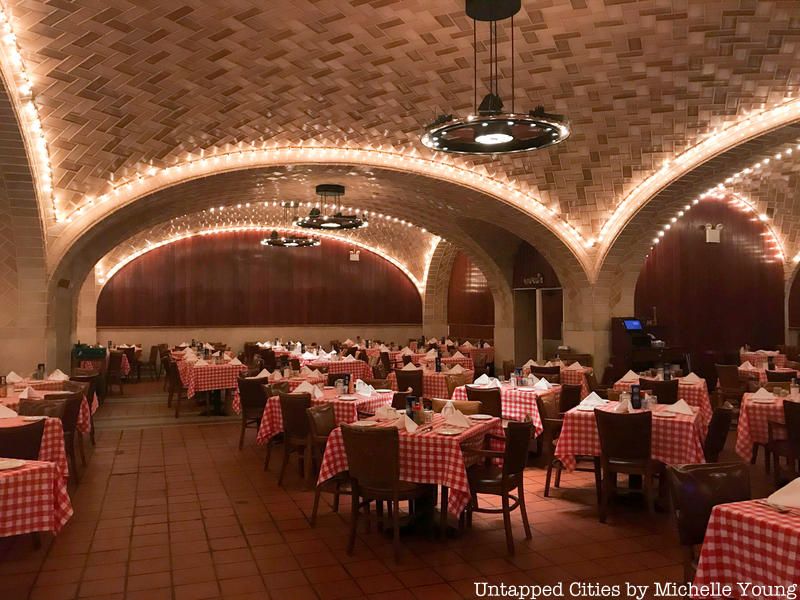
All the restaurants inside Grand Central Terminal — designated a National Historic Landmark in 1976 and a New York City Landmark in 1967 — technically qualify for this list, but The Oyster Bar & Restaurant deserves special mention. Located on the lower level of New York’s iconic transit hub, the eatery has been dishing out the freshest oysters and seafood dishes since 1913.
Over a hundred years later, The Oyster Bar & Restaurant remains a New York institution and is regarded not only for its food but for its vaulted, Guastavino-tiled ceiling and timeless architecture. Additionally, the archway in front of the restaurant is the most well-known whispering gallery in New York City. Nobody knows whether this whispering gallery was built this way intentionally, but it has provided endless amusement for residents and tourists alike.
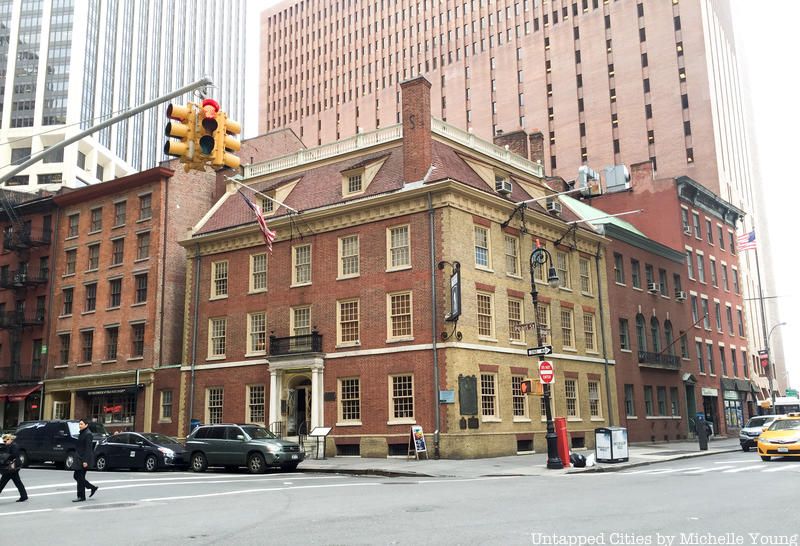
If you are looking for George Washington’s tooth, Fraunces Tavern is the place to be. The building on the corner of Pearl Street and Broad Street was constructed in 1719 in the Georgian style as a home for the Delancey family. Samuel Fraunces, an American revolutionary, turned the yellow brick structure into a tavern called the Queen’s Head. It was a meeting spot for the Sons of Liberty, and George Washington gave his farewell speech here on December 4, 1783.
Since 1904, the tavern has been under the ownership of the Sons of the Revolution in the State of New York. Though the many reconstructions it has undergone have attempted to restore the original edifice, several fires in the 19th century made it impossible to know the original building plan. Nowadays, Fraunces Tavern multitasks as a museum and a functioning restaurant and bar. It holds a spot on the National Register of Historic Places and was declared a landmark in 1965 by the New York City Landmarks Preservation Commission.
Next, check out the 15 oldest restaurants in New York City!
Subscribe to our newsletter